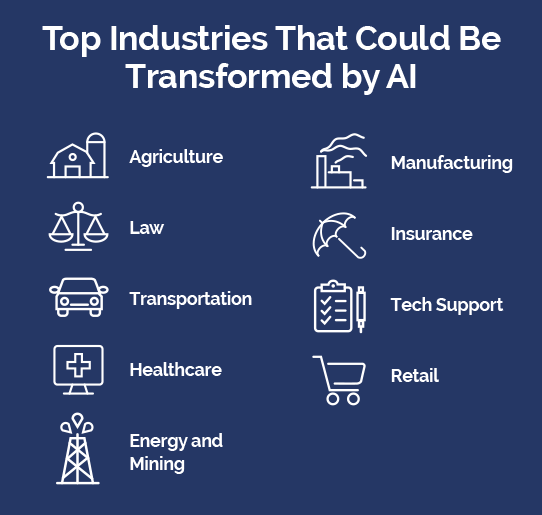Depending on whom you talk to, the term Artificial Intelligence (AI) triggers a wide range of reactions. Doomsayers conjure images of autonomous machines rebelling and taking control of the world. Businesses dream of working at yet unimaginable levels of efficiency, or delivering hyper-personalized products and customer service. But when the subject of AI arises in government circles people often grow silent and swallow hard – for good reason:
The global race for AI dominance has started, the big countries are weighing in, and the consequences for winning or losing are huge.
Spoiler Alert: things will only get hotter.
No Country for Old Tech
President Donald Trump recently signed an executive order inaugurating the American AI Initiative, declaring, “Continued American leadership in artificial intelligence is of paramount importance to maintaining the economic and national security of the United States.” Not to be outdone, China has unveiled its New Generation Plan in which it announced their goal of being a global AI leader by 2030.

Russian President Vladimir Putin has weighed in as well, declaring, “Whoever becomes the leader in this sphere will become the ruler of the world.” Wow.
And these are just three of the many countries that have developed or announced their development of national artificial intelligence strategies. 1

AI Offers Something for Everyone

While it is easy to view the global AI race as a competition amongst governments, the technology really transcends politics. One of the reasons countries are racing to be king of AI is that it promises to be a game-changer for both the public and private sectors. Aside from the obvious national security benefits, artificial intelligence already has or will soon transform enterprises such as transportation, healthcare, education and more.
The prize? Forecasts suggest that AI will add $15.7 trillion to the global economy by 2030. 2

GPUs Rule AI
The challenge for I & O professionals pertains not just to the significantly greater computing power needed to run AI applications, but the type of hardware required, specifically GPUs.
It helps to understand that much of AI involves processing images, not just code. Autonomous vehicles, for example, “learn” how to negotiate busy intersections by evaluating thousands of images of intersections. GPUs are specialized microprocessors originally developed for 3D rendering. But that also makes them perfect for image-based high-performance computing applications like AI, AR and VR.
You can read more about GPU-accelerated computing in our recent blog on the subject.
GPUs are Bringing the Heat
The problem for operators integrating GPU-accelerated servers into their data center is that these machines run significantly hotter than their more traditional counterparts. Some are packed with hundreds of GPUs. Placing multiples of these together far exceeds the 5-10 kW/rack typical of air-cooled data centers.
In planning for AI applications, most operators will find they simply do not have enough space to achieve the proper compute density using traditional air-cooled or even liquid-to-chip methods.
Cool AI Solution: Liquid Immersion

Liquid-immersion cooling is THE solution to this problem. Because it suspends servers in dielectric coolant with 1,200 times the heat conducting properties of air, liquid-immersion cooling is ideally suited to handling hot GPU-accelerated servers. “Within five years…ten on the outside, there will no alternative to immersion cooling.” – Dr. Satoshi Matsuoka, Tokyo Institute of Technology. Indeed, it may be the only way operators can effectively scale up and participate in the global AI race.
Liquid-immersion cooling can help you break through the heat barrier, cool up to 200 kW/rack, and easily achieve the optimal AI compute density within your current data center, via a much smaller than traditional footprint. Because it’s modular, solutions like GRC’s ICEraQ™ micromodular, liquid immersion cooling system enable you to easily spread out incrementally through mixed racks or rows, or by adding a high-density pod.
What’s more, since it requires little in the way of support infrastructure no CRAHs, CRACs, air handlers, or raised floors, liquid immersion cooling also allows you to expand into otherwise non-suitable spaces like a spare conference room or unused basement.
Just as important, since they are essentially sealed off from the environment and have been stripped of any moving parts, servers optimized or designed for immersion provide an exceptional level of reliability as well.

Another Cold War of Sorts?
For decades, the world lived in the presence of the Cold War. In a sense, the global AI race has created another – yet benevolent one – with participants battling to effectively cool the heat buildup of GPU-based servers. In the end, with immersion cooling, they may not conquer the world but they certainly will be perfectly armed to win the war and reap the benefits of their success.
1 Tim Dutton. An Overview of National AI Strategies—Medium, June 26, 2018. https://medium.com/politics-ai/an-overview-of-national-ai-strategies-2a70ec6edfd
2 PwC. https://www.pwc.com/gx/en/issues/data-and-analytics/publications/artificial-intelligence-study.html
3 Araya, Daniel. Who Will Lead in the Age of Artificial Intelligence—Brookings. February 26, 2019 https://www.brookings.edu/blog/techtank/2019/02/26/who-will-lead-in-the-age-of-artificial-intelligence/
4 Utilizing chilled water.
Are You Ready to Reap the Benefits of the AI Race?
It’s easier than you think. Send us an email at info@www.grcooling.com or call +1 (512) 692-8003 and we’ll run the numbers and show you how.
Stay informed on GRC’s insights & expertise of data center liquid-immersion cooling & watch out for the next GRC blog installment.



